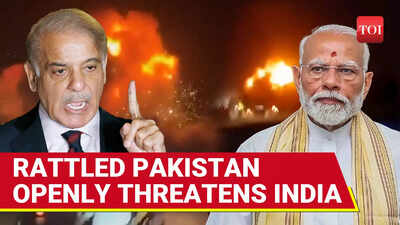- News
- World News
- Pakistan News
- Operation Sindoor: Pak army personnel attend funeral of terrorists killed in strikes
Trending
Operation Sindoor: Pak army personnel attend funeral of terrorists killed in strikes
Indian forces launched Operation Sindoor, targeting terrorist infrastructure in Pakistan and Pakistan-occupied Kashmir in response to the Pahalgam attack. The strikes, which were precise and non-escalatory, destroyed nine terrorist sites linked to groups like LeT and JeM.
In an open support to terrorism, Pakistan army personnel attended the funeral of three terrorists killed in the Indian military strikes along with members of Hafiz Saeed's banned organisation, Jamaat-ud-Dawah (JuD) on Wednesday. The three terrorist were killed as India launched precise strike on terror group's headquarters in Muridke, some 40 km from Lahore, as part of Operation Sindoor.The funeral prayer for the terrorist, Qari Abdul Malik, Khalid and Mudassir, was held in Muridke amid high security, news agency PTI reported.The funeral was also attended by members of the civil bureaucracy.The funeral prayer was led by Hafiz Abdul Rauf, a Lashkar-e-Taiba (LeT) terrorist.The open funeral for terrorists amid heavy presence of Pakistan police and army personnel further indicate Pakistan government's open support for the terrorist organisations.In a 25-minute precision operation early Wednesday, Indian armed forces destroyed nine terrorist infrastructure sites in Pakistan and Pakistan-occupied Kashmir (PoK), including facilities linked to Jaish-e-Mohammad and Lashkar-e-Taiba. The strike was "measured" and "non-escalatory," and came in direct retaliation to the April 22 terror attack in Pahalgam.Foreign secretary Vikram Misri said the decision to carry out the "proportionate" strikes was driven by Pakistan’s failure to take any visible action against terrorist infrastructure operating from territories under its control.

About the Author
TOI World DeskEnd of Article
Follow Us On Social Media










